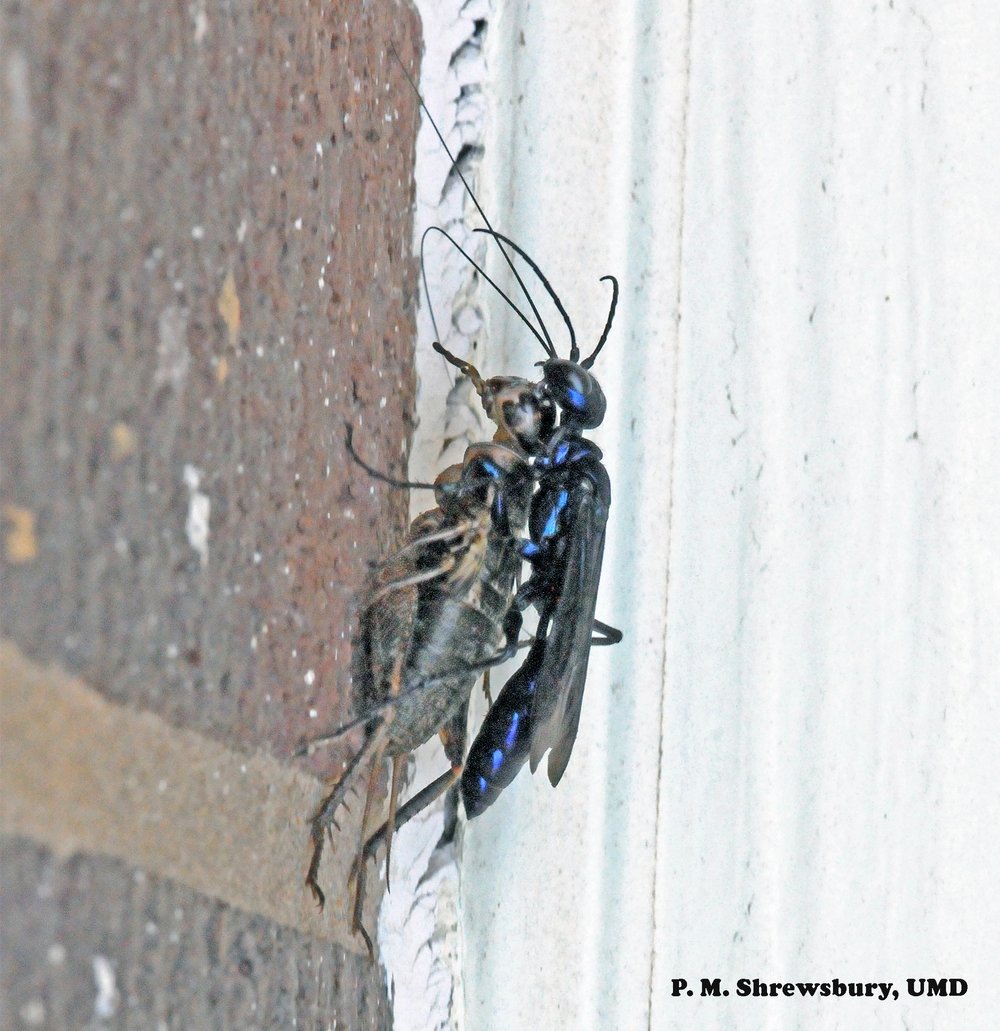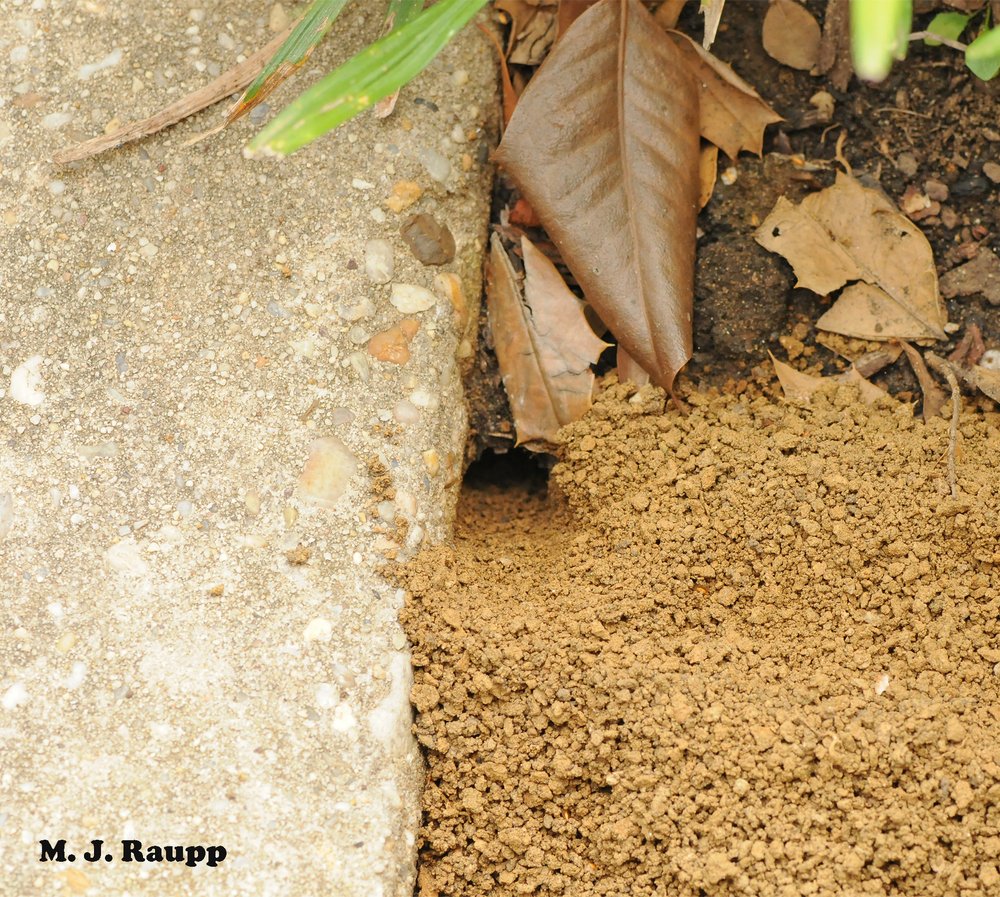Steel-blue cricket-hunters steal lives: Steel-blue cricket-hunters, Chlorion aerarium

With a cricket securely tucked beneath, a steel-blue cricket-hunter scaled my brick siding, apparently to gain altitude for flight to her nesting site. Image credit: Paula Shrewsbury, PhD
Somewhere in my basement, a male field cricket provides a chirpy serenade, a reminder that summer has ended and fall has arrived. To his kin outdoors, chilly weather will soon end their chirps and merry-making. But one grim reaper of crickets, the steel-blue cricket-hunter, brings an even quicker end to the halcyon days of crickets. In weeks past, I watched this frenetic, dazzling blue wasp inspecting shredded bark, small twigs, and miniature caverns beneath edging stones in my butterfly garden. The speed with which this sizable hunter (up to 1 ¼ inch) dashed about the landscape challenged me to keep up as I tried to record its movements. In the case of the steel-blue cricket-hunter, prey are elusive and in this game speed is of the essence.
As field crickets chirp a farewell to summer, they are stalked by a formidable enemy, the steel-blue cricket-hunter. With wings twitching nervously, a female takes off on her quest. First stop, a patch of mulch which turns out to be not quite the right spot to find her prey. Next stop, a stone wall where crickets hide in dark rocky crevices. After disappearing briefly, she emerges with her prize, a paralyzed cricket soon to be delivered to a subterranean nursery as food for her young.

Burrows of cicada killer wasps are often used as nest sites for steel-blue cricket-hunters.
One of the primary prey insects of the steel-blue cricket-hunter is the Pennsylvania field cricket. This large boisterous troubadour often invades homes and conducts its arias from the basement in late summer and autumn. Accounts of the steel-blue cricket-hunter describe the wasp flushing the cricket from hiding, pouncing on the victim, and delivering several stings, each laced with potent venom that ultimately paralyzes but does not kill the prey. The wasp then straddles the cricket and using its powerful mandibles, grasps the cricket and carts it away to a subterranean lair. The lair of the cricket-hunter often adjoins the burrow of its larger ground nesting cousin, the cicada killer wasp, which we met in a previous episode of Bug of the Week. Existing burrows fashioned by cicada killers serve as an atrium for cricket-hunters, which construct smaller tunnels originating from the shaft excavated by the larger wasp. Within these tunnels, cricket-hunters construct multiple cells, each of which may be provisioned with as many as nine crickets. The female wasp then closes the burrow using stones, bits of wood, and other debris. However, before she leaves each cricket-filled cell, one of the hapless victims receives a lethal gift from the female wasp: an egg, that hatches in about a day. The tiny wasp larva feasts on its natal host, then consumes the larder left by its mother in less than a week. After completing development, fresh new cricket-hunters emerge from their pupal cases, escape from the earth, and begin the search for prey.
In addition to ridding the world of crickets, other parasitic wasps like the blue-winged digger wasp, Scolia dubia, and its congener Scolia nobilitata, provide important ecosystem services as pollinators and biological control agents of insect pests, including Japanese beetles. For the past several weeks, my flowers have been bustling with wasps and bees of several varieties as they feed on the nectar and pollen. Once fueled by nature’s ambrosia, these predators dash away, seeking other insects as food for their young. The next several weeks provide excellent opportunities to enjoy these clever hunters.
Acknowledgements
The fascinating article by David Peckham and Frank Kurczewski entitled “Nesting behavior of Chlorion aerarium” was used as a reference for this episode. We thank Dr. Paula Shrewsbury who photographed the steel-blue cricket-hunter with its prey and for providing the inspiration for this story.
This post appeared first on Bug of the Week